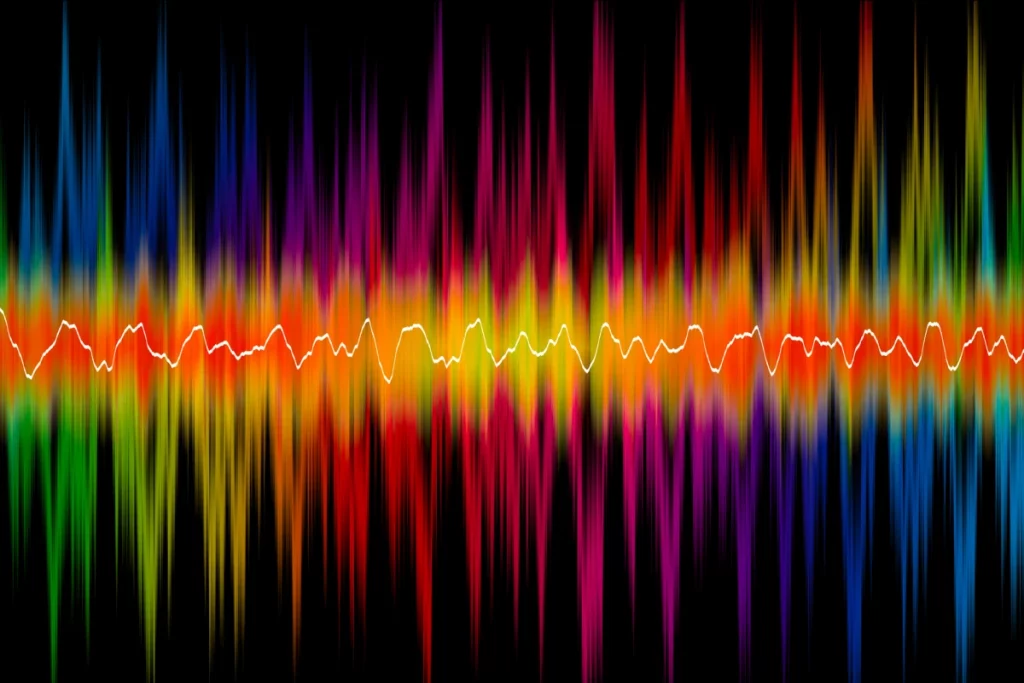
We hear musical instruments all the time. Hopefully, we enjoy what is coming out of them. Do you ever think when you hear an instrument what frequency range is that sound? I know some of you out there do that because you have mentioned it during our free 30 minute room consultation https://www.acousticfields.com/free-room-analysis/. Every instrument has a frequency response range. The instrument will have a low frequency that will be its resonant frequency and then it will have octave bands above that lowest frequency. The frequency produced by the instrument is a function of the design of the instrument, mainly the length or depth of the instrument. The depth of the instrument controls the resonant frequency the instrument is capable of producing using its current design. All frequencies above the resonant frequency are produced in harmonic order. It’s important to have a working knowledge of frequencies since they make up all sounds we hear. It’s important to understand frequencies when it comes to room acoustics and the treatment of all frequencies.
At Acoustic Fields, all we see is energy. The room only sees energy. It doesn’t care what produces it or what manufacturer made the source of the energy. The energy could be produced from an amplifier or a vocal. The room only sees energy composed of frequencies and those frequencies make up notes and notes make up octave bands. It’s a large nuclear family. To understand the energy we place within our rooms, we must divide the energy up into two categories. We must look at energy above 100 Hz. and we must look at energy below 100 Hz. Both energy categories require different treatment types. Energy below 100 Hz. requires technology that works on sound pressure Room energy below 100 Hz. is wave energy and it moves like the ocean which oscillates through your room like a 15″ wave. Energy below 100 Hz. must be treated with Diaphragmatic Absorption to produce the best square foot to square foot coverage. It is the most powerful of the three low-frequency sound absorption technologies. Energy above 100 hz. can be treated with an open celled foam technology for absorption along with diffusion to make the room sound larger.
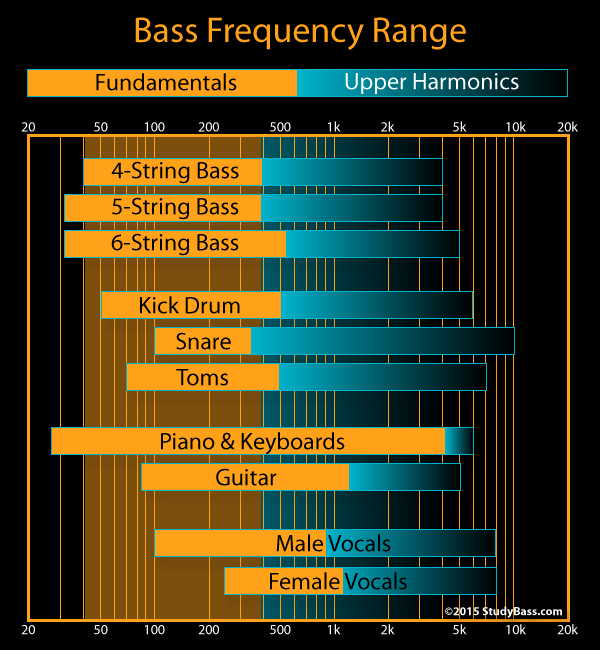
Let’s take a look at this graphic which shows the frequency range of each instrument shown. For purposes of this discussion, we will define low-frequency energy as any energy below 100 Hz. This energy below 100 Hz. is technically low-frequency energy. Laymen use the term “bass” to define energy within this region. This term probably came about as a result of bass guitars producing energy that did not fit in most rooms. Since a bass guitar does produce low-frequency energy, we can see that there are many other instruments that produce the same energy and even lower frequencies than a bass guitar. https://www.reddit.com/r/explainlikeimfive/comments/5d2xir/eli5_if_lower_frequencies_mean_less_energy_why/. Low -frequency or “bass” is composed of waves like ocean waves. These waves of energy oscillate through our rooms like the ocean at the North Shore. They are long, high, and powerful. Middle and high frequency energy ( voice) is like sunshine or rays of energy. Rays are shorter, thinner, less powerful. https://en.wikipedia.org/wiki/Sound_energy
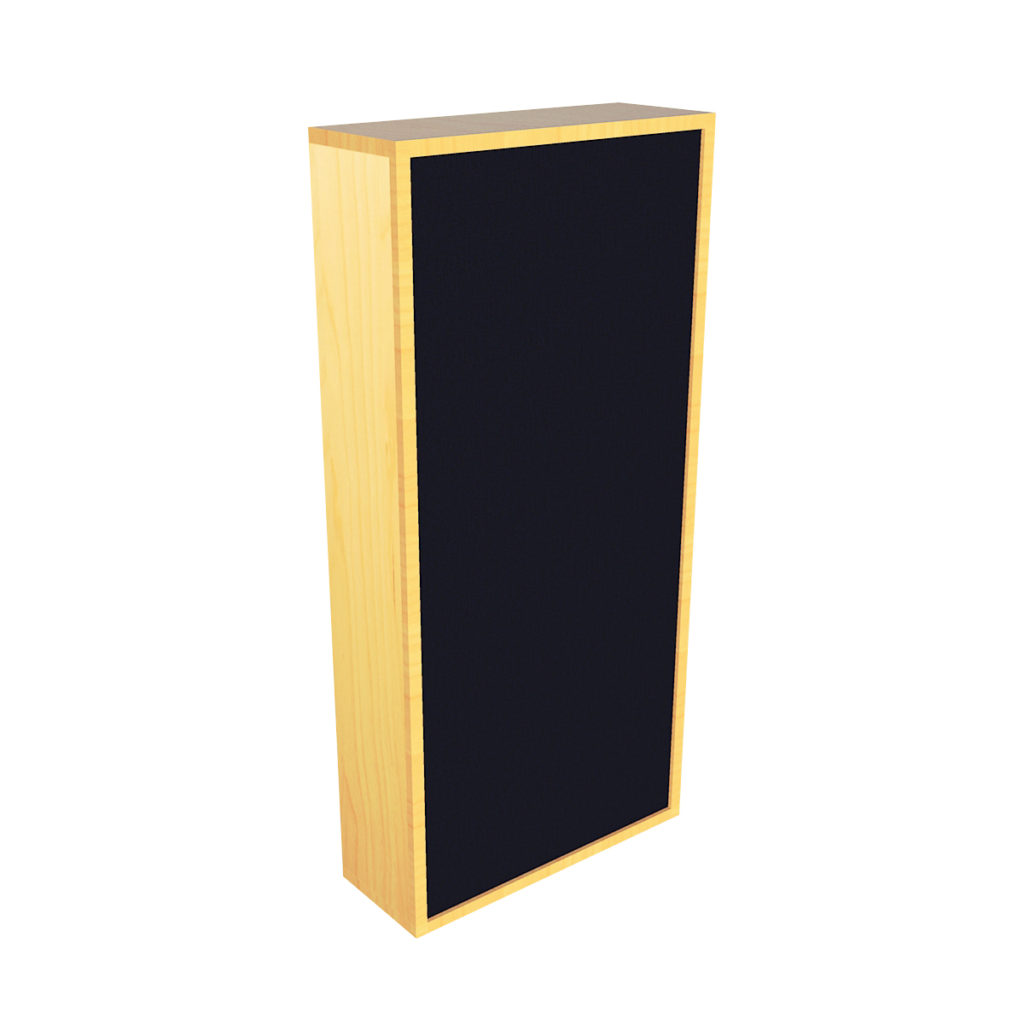
As we mentioned above, we must treat all frequency ranges within a room.This can be accomplished by creating what we term in physics is a broadband absorber. We can design for the lowest frequency we wish the unit to absorb at. This is called the resonant frequency of the unit. For our Carbon Absorber, we chose 40 Hz. as our starting point. To achieve a 63% absorption rate at 40 Hz, we will need 12″ of cabinet depth. Our ACDA series is 16″ deep and goes down to 30 Hz. The lower resonant frequency we need to design for determines the cabinet depth. Our carbon technology determines the rate of absorption or how much energy at each frequency the unit will absorb at. There are many products in the marketplace that claim to absorb down to 40 Hz. You must do two things. You must look at the test results and the lab that did the testing. Secondly, you must look at both the rate and level of absorption for each octave band. Not all products are created equal. Per square foot you can not find another product that performs as well as our carbon technology. https://www.acousticfields.com/product/carbon-panel/
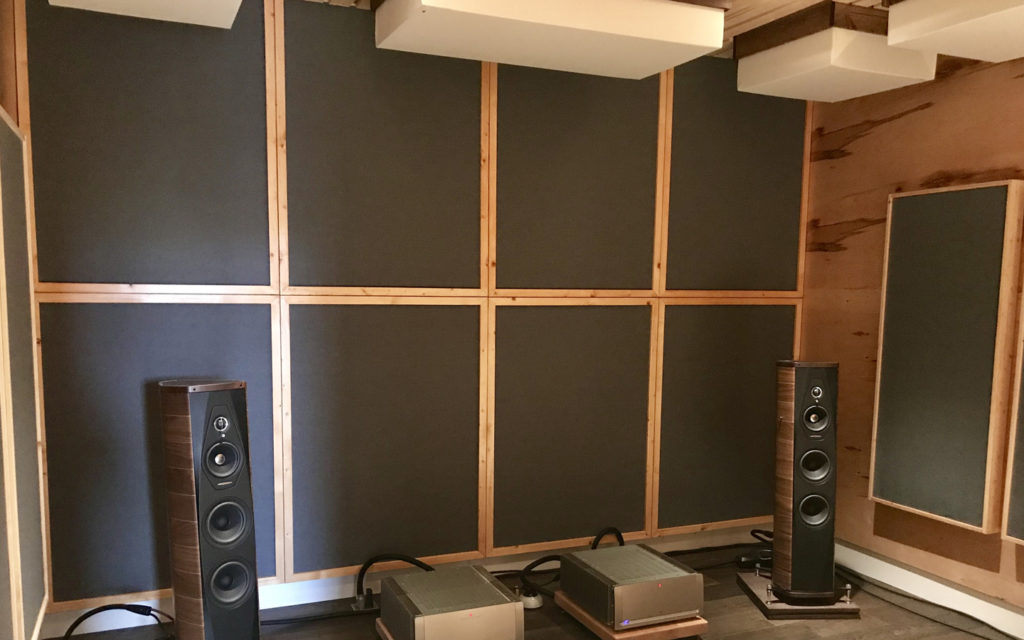
The front wall or the wall behind our speakers is a powerful wall. It is the wall that is host to the largest low-frequency pressure issues within the entire room. It is also the wall that produces reflections back at us so it becomes more difficult to focus our center image. Resolution and separation are also reduced. Absorption and diffusion are our two options when it comes to treatment. In this DIY project, the client built our CAW technology https://www.acousticfields.com/carbon-absorber-wall/ into the walls and then covered the wall with our foam technology with a fabric frame face. https://www.acousticfields.com/product/acoustic-foam/. This is a full range front wall treatment starting at 30 Hz. and going through 6,300 Hz.
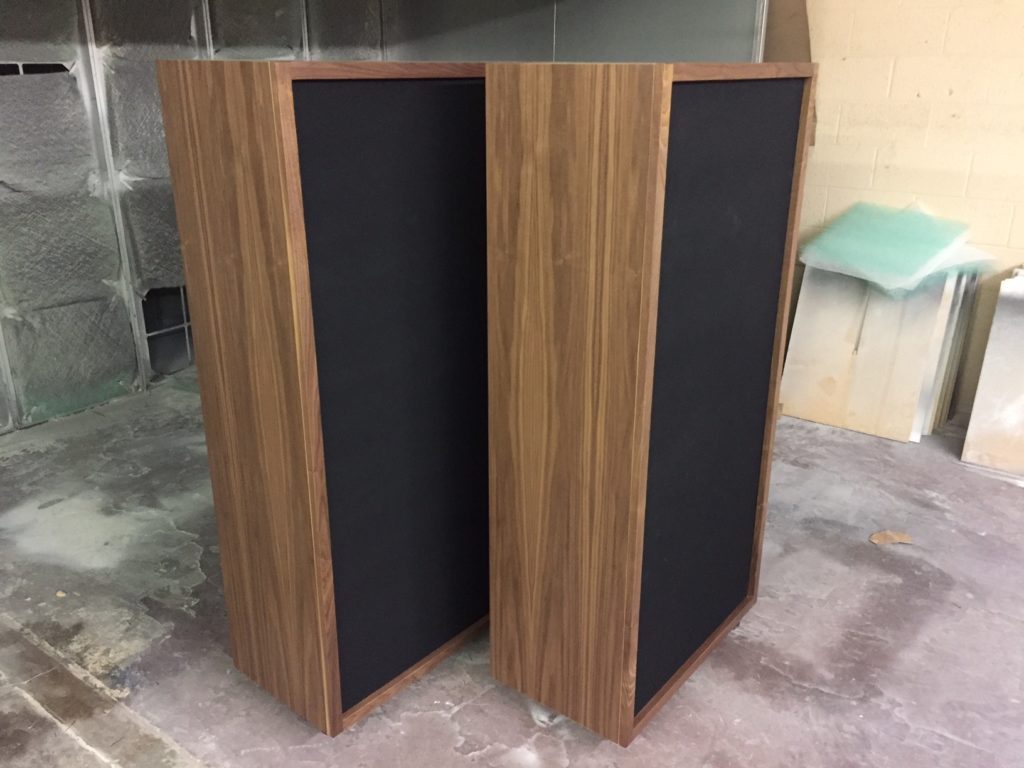
You can accomplish the same treatment objectives with free standing ACDA -10 units. These units are working from 30 Hz. – 6,300 Hz. just like the DIY project above. These units are not built in but rather move freely around your room for positioning along the proper wall surface areas. Each unit represents 12 square feet of absorption surface area and most wall surface areas take between 50 – 75 square feet of coverage to achieve the rates and levels of low-frequency absorption at the front wall. Most small critical listening rooms take between 16 and 20 units to create a reflection and pressure free environment for you to enjoy just your electronics and not your room sound. We can paint or veneer them and you can choose from over fifty different colors and textures.


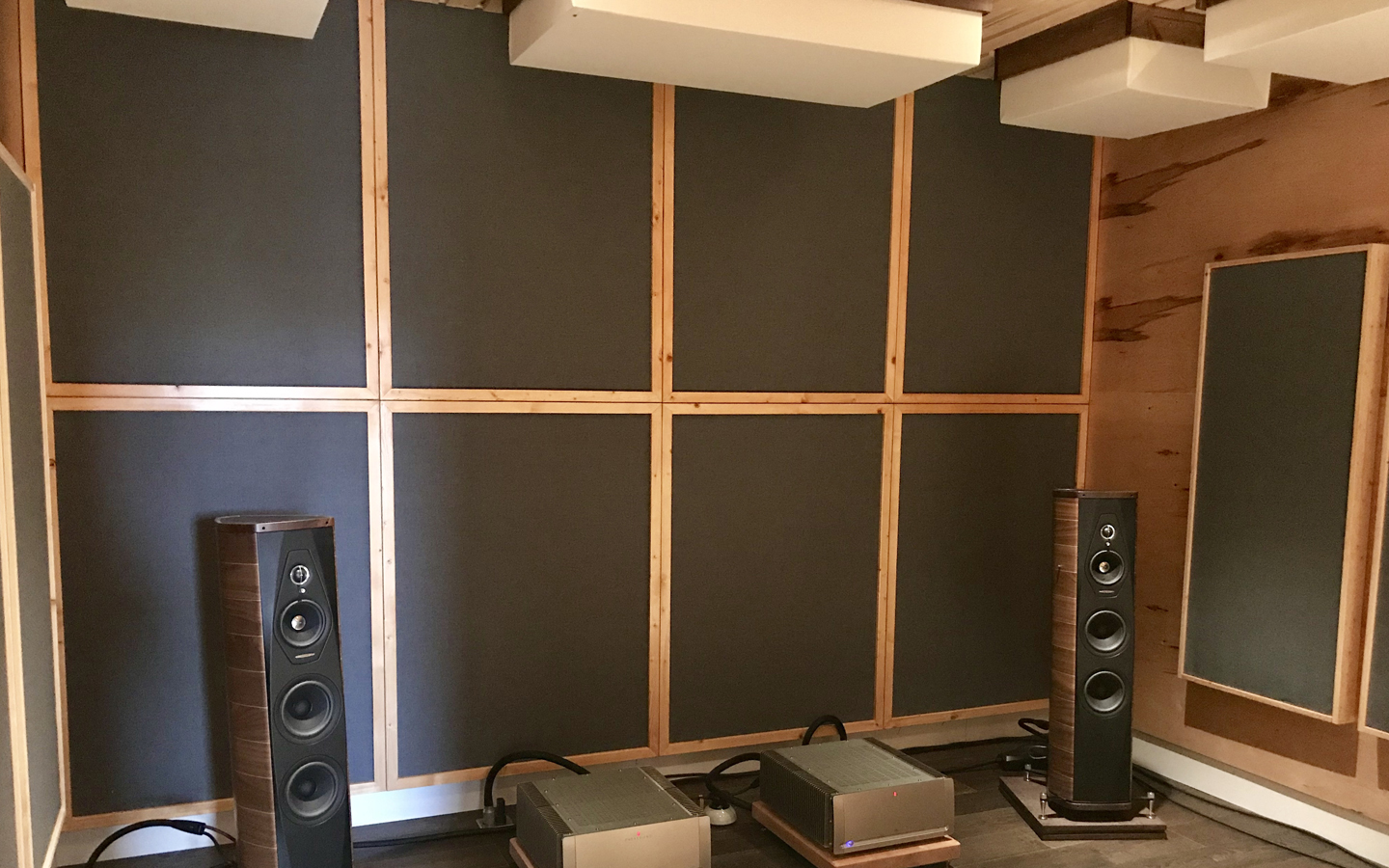





Use whatever floor type suits your usage. Carpet should have a carpet pad under the carpet. Hardwood floors should have…
Hello. This article mentions choosing a sound absorbing carpet and a pad. Could you please give examples of products? I…
All noise must be measured for frequency and amplitude. The barrier design chosen to fix the noise issue is dependent…
Hi, Really interesting article. I've just had a prototype water filtration and softening (using filters, not salt) system installed in…